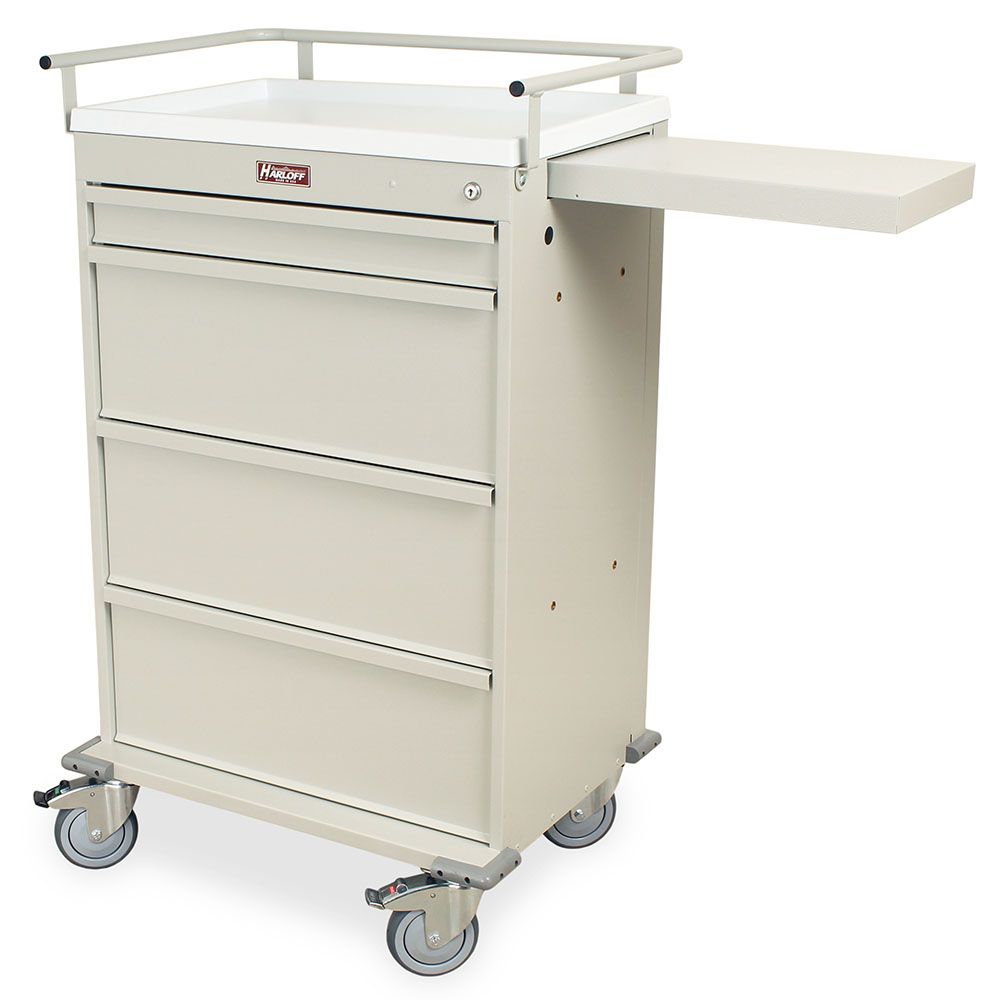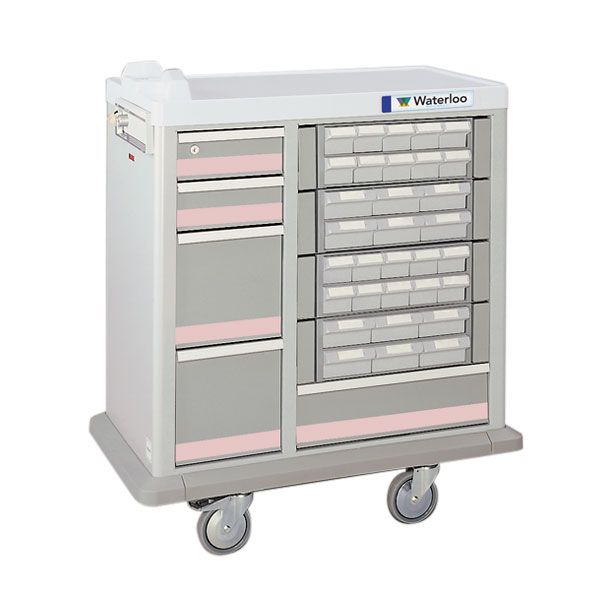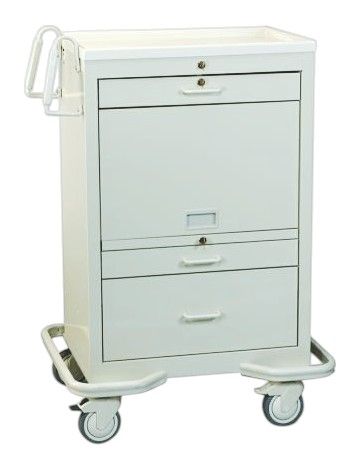Home » Hospital & Durable Medical Equipment » Increasing Patient Safety With The Right Configuration For Medication Carts » Increasing Patient Safety With The Right Configuration For Medication Carts
Increasing Patient Safety With The Right Configuration For Medication Carts

4 Drawer, 450 Punch Card Capacity Medication Cart w/Key Lock
Retail Price: $2,269.00
Your Price: $2,287.71

Full Sized 40 Bin Medication Cart w/ 5 Drawers & Key Lock
Retail Price: $5,457.59
Your Price: $4,457.59

Medication Dose Cart w/ Cassette, 3in Lockable Drawer & 20 Bins
Retail Price: $3,250.45
Your Price: $2,643.50
 Unit: single
Unit: single
One of the most preventable errors made in medical facilities is administering the wrong medication to a patient. This can occur for a variety of reasons including inattention by staff, errors in interpreting handwriting on orders, staff fatigue and the requirement to see more and more patients in the same amount of time. As staff feels their time is limited with each patient double checking medication is often seen as time wasting activity that counts against their ability to complete all tasks required during a set time period.
In a study completed in Volume 19, 2004 of the Journal of Nursing Care Quality found that out of 983 nurses interviewed only 45.6% believed that all drug errors are actually reported. The nurses reporting that all errors in patient meds were not reported indicated that the under-reporting occurred because of fear of peer reactions as well as those of the manager. One way to assist nursing staff in safe and correct administration of medications is to choose the most effective configuration for medication carts based on the facilities needs.
Let's look for a minute at the pros or the positive aspects that should be considered when selecting medications carts. These points are not in any particular order and one factor may be more essential in some types of healthcare facilities than others. Overall look for features such as:
-
Removable cassettes that contain multiple patient bins. This allows easy filling of adjacent rooms or patients to avoid mistakes.
-
Locking drawers that will automatically lock after a pre-set or programmed time.
-
Electronic locks with or without proximity cards and keypad access but with keyed overrides.
-
Specialized options for allowing access to some or all parts of the cart based on qualifications and levels of credentials to administer specific types of medications.
-
Narcotics drawers separate from general meds.
-
Various warranty options offer significant coverage on defects.
-
Options for integration with monitoring systems that provide information on cart access and times when the cart was in use.
-
Shelves and additional storage areas on the cart to aid in staff having the supplies and materials they need on the cart.
-
Multiple patient bin configurations and considerations for smaller units or very large healthcare facilities
-
Clear labeling options for patient bins to avoid errors in medication administration
-
Additional accessories such as notebook holders, laptop shelves, cup holders, utility baskets, glove box holders
In reality selecting the right style and model of medication cart will help to limit any possible negatives in the selection process. With that being noted there are definitely some considerations that may make some models less desirable than others in specific facilities.
It is important to check into the following factors before making a final decision:
-
Are there sufficient bins and cartridges in the cart to make it efficient. Small numbers of bins and cartridges or drawers in large facilities will require multiple trips to fill for the rounds.
-
Keyed locks on medication carts can pose problems when multiple staff members are using the carts. Keys can easily be misplaced, confused with other sets or even left in patient areas posing possible security issues.
-
Limited additional storage on the cart for other types of essential equipment. This may require that staff have access to other types of carts to carry necessary testing equipment or other types of required supplies.
-
Limited number of accessories or replacement parts for some models of carts.
Medication cart that allow reduced errors in administration of meds are really a cost saver for the hospital and medical care facility. It also helps to increase patient safety and builds increasing professional standards within the facility when errors are reduced.














